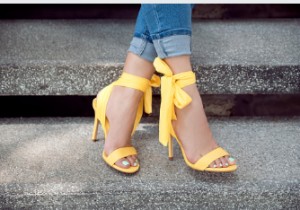The myths and symbols behind wearing high heels are well documented. From the Physiological effects of wearing high heels to the Symbolism behind the fashion, this article outlines why we shouldn’t be wearing them. It also provides alternatives to popular footwear. Read on if you’re looking for an affordable alternative to high heels. You may be surprised by what you find. You may be pleasantly surprised. Read on for some surprising facts!
 Symbolism
Symbolism
As with any fashion item, high-heeled shoes carry a complex relationship with their gender. While women are generally associated with them as symbols of feminine beauty, power, domination, and sex, they also carry deeper symbolic meanings. Moreover, depending on the context in which they are worn, the symbolic meaning of high-heeled shoes may be a dynamic myth. In the video, we learn about the personal experiences of women who have worn high heels and how they have perceived these shoes.
The Symbolism of high heels is often overlooked, but to understand these footwear pieces’ social and cultural significance, we must explore the history of the object in question. High heels have long been associated with prostitution, especially in the West, but the Symbolism of these shoes is even more complex. They have come to symbolise sexuality and prostitution and the lowest statue of a woman. As a result, high heels have become synonymous with the oldest job globally and sexism. Then, check out Spendless high heels.
Physiological effects
Wearing high heels can have negative consequences for both the body and women’s health. The force of wearing high heels can push the tibia inward, negatively impacting the ability to maintain an upright stance. Moreover, prolonged wear of high heels may weaken the ankle muscles, compromising balance and postural control. The risk of falls increases, making the solution of wearing flats or low-heeled shoes more apparent. However, such footwear is still prevalent in some places of work and is not always practical for women.
Wearing high heels can cause discomfort in other parts of the body. Besides your feet, wearing high heels can affect your centre of gravity and toenails. In addition, if you wear heels for long periods, they may cause the spine to become hyperlordotic. The hyperlordotic spinal column causes pain and discomfort. High heels may also lead to spondylolisthesis, a type of deformity in the spine. So check out Spendless high heels.
Pain caused by wearing high heels
While high heels look great, they can be a dangerous choice. High heels place a great deal of pressure on the ball of the foot, which puts undue strain on the calf muscles and the joints between the toes and the foot. As a result, high heels can aggravate various foot problems, such as hammertoe, bunions, and corns. High heels can also strain the foot’s arch, making standing and walking painful.
Those who wear high heels are at risk for developing plantar fasciitis, which results from the increased pressure on the heels. This condition affects the toes and often results in a burning sensation on the bottom of the foot. Treatment for plantar fasciitis involves resting the foot and applying ice. Non-steroidal anti-inflammatory drugs may also help relieve symptoms. On the other hand, Morton’s neuroma affects the ball of the foot and the area between the third and fourth toes. Symptoms of this condition include sharp, burning pain, numbness, and tingling.
Alternatives to high heels
There are numerous alternatives to high heels, including wedge pumps, flats and sneakers. While not as comfortable as a high heel, a wedge heel still provides a bit of height and prevents the knee and heels from feeling too stressed. However, it’s best to choose shoes made of a more comfortable material. Wedge heels are also often more comfortable than stilettos. While stilettos are very striking and can be used for special occasions, they’re not comfortable for everyday use.